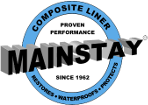The amount of water required to cure cement in a concrete mix is relatively small, approximately one fourth the weight of the cement (water-to-cement ratio = .25). Unfortunately, it is not possible to place, consolidate, and finish concrete mixed with this amount of water. As such, additional water must be added to the concrete mix to make it fluid enough to pump, pour, consolidate, and finish. This excess water, or “water of convenience,” is not converted during the curing process of concrete — it remains in the concrete as liquid or vapor. Over time, the water of convenience may evaporate away, depending on the environmental conditions at the location where the concrete is placed (i.e. in a dry environment, it may evaporate rapidly; in a moist environment, it may not evaporate at all). Even for concrete slabs that are protected from rain and other sources of water, drying to a condition suitable for the application of resilient flooring may take many months. The test methods that are commonly employed to determine moisture content in concrete are subject to inaccuracies that may lead to resilient flooring failures, as shown in the following graphics:
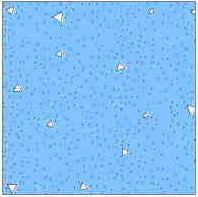 When concrete is first poured, the water of convenience is distributed uniformly throughout.
When concrete is first poured, the water of convenience is distributed uniformly throughout.
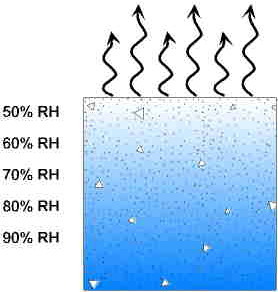 As water evaporates from the concrete, a moisture gradient forms, and the surface of the concrete exposed to air becomes drier than the surface of the concrete poured against the metal deck pan or vapor barrier.
As water evaporates from the concrete, a moisture gradient forms, and the surface of the concrete exposed to air becomes drier than the surface of the concrete poured against the metal deck pan or vapor barrier.
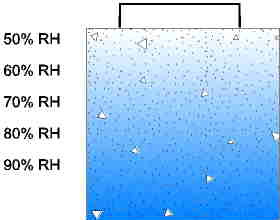 Testing the surface of the concrete slab for moisture emissions using anhydrous calcium chloride per ASTM F-1869 may produce inaccurate results because this test cannot detect moisture contained in the concrete at depth.
Testing the surface of the concrete slab for moisture emissions using anhydrous calcium chloride per ASTM F-1869 may produce inaccurate results because this test cannot detect moisture contained in the concrete at depth.
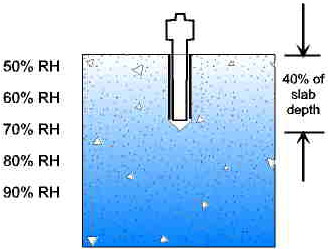 In-situ relative humidity testing per ASTM F-2170 produces more realistic results. However, because the test hole is only drilled to 40% of the slab depth, concrete deeper than this may contain more moisture than the test indicates.
In-situ relative humidity testing per ASTM F-2170 produces more realistic results. However, because the test hole is only drilled to 40% of the slab depth, concrete deeper than this may contain more moisture than the test indicates.
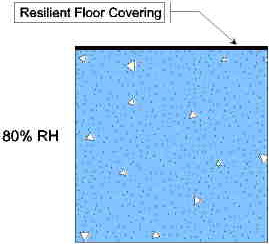 After the installation of resilient flooring, surface drying will virtually cease and the moisture gradient will start to go away. The remaining moisture will become more evenly distributed within the concrete.
After the installation of resilient flooring, surface drying will virtually cease and the moisture gradient will start to go away. The remaining moisture will become more evenly distributed within the concrete.
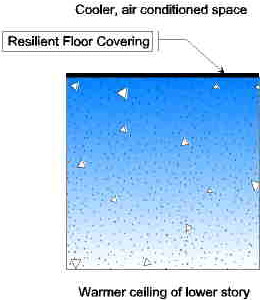 Over time, the moisture gradient may invert because the moisture will be drawn toward the cooler, air-conditioned floor surface beneath the resilient flooring. Moisture drawn upward through the slab will carry with it dissolved alkaline salts from within the concrete.
Over time, the moisture gradient may invert because the moisture will be drawn toward the cooler, air-conditioned floor surface beneath the resilient flooring. Moisture drawn upward through the slab will carry with it dissolved alkaline salts from within the concrete.
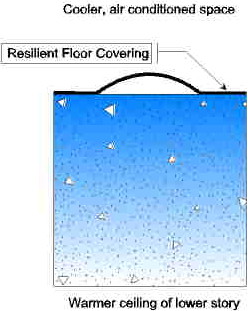 Liquid water containing alkaline salts may condense beneath resilient flooring. This alkaline water can emulsify flooring adhesives and cause disbondment of resilient flooring. Disbondment may take the form of blisters and puckered areas, resulting in a trip hazard.
Liquid water containing alkaline salts may condense beneath resilient flooring. This alkaline water can emulsify flooring adhesives and cause disbondment of resilient flooring. Disbondment may take the form of blisters and puckered areas, resulting in a trip hazard.

